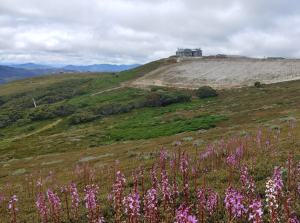Mt Buller water storage project
Client: Mount Buller and Mount Stirling Alpine Resort Management Board
Location: Mount Buller and Mount Stirling, Victoria
Date: January 2018 and ongoing
Services provided:
- Ecological and cultural heritage impact assessments for a 100-megalitre water storage in a sensitive alpine and sub-alpine environment
- Development of management plans and strategies for the avoidance, minimisation and mitigation of the project’s potential environmental impacts, including offset management plans, rehabilitation plans and a comprehensive program of ecological monitoring and adaptive management.
- Ongoing implementation of the ecological monitoring and adaptive management program.
- Presentations of monitoring and management results at annual meetings with government agencies.
- Ongoing advice regarding compliance with permit/approval conditions.
Background
The Mount Buller and Mount Stirling Alpine Resort Management Board (RMB) constructed a 100-megalitre off-stream water storage at Mount Buller in 2019/2020. The water storage is upslope of many of Mount Buller’s Alpine Bogs and therefore has the potential to affect their hydrology and ecology. Alpine Bogs are recognised as a threatened ecological community under Commonwealth and Victorian legislation.
During the rigorous planning and approval process for the project, Biosis collaborated with the RMB, design engineers and government agencies to develop plans and strategies for the avoidance, minimisation and mitigation of the project’s potential impacts on biodiversity, with a particular focus on Alpine Bogs. These plans and strategies included development of the Hydrological and Ecological Monitoring and Adaptive Management Program (HEMAMP), with the objective of maintaining the extent and condition of Alpine Bogs downslope of the water storage.
Outcome
The management plans and strategies that Biosis prepared for the Mount Buller water storage project were a fundamental component of the project’s approvals. In particular, the HEMAMP provided confidence that the project’s potential impacts on Alpine Bogs could be avoided, minimised and mitigated to an acceptable level.
Since 2018, Biosis has collaborated with the RMB in implementing the ecological components of the HEMAMP. This involved two years of baseline monitoring before construction of the project, one year of monitoring during construction and annual monitoring and management since construction finished in 2020. It also involved construction of a dedicated environmental watering system, designed to maintain the hydrology and therefore ecology of the Alpine Bogs downslope of the water storage.
The monitoring program has allowed for ecological changes in the Alpine Bogs to be detected in a timely manner and for those changes to be addressed through informed adaptive management. The monitoring and adaptive management has also allowed for collaboration between a multitude of stakeholders, including ecologists, land managers, the Taungurung Traditional Owners and regulatory authorities, to ultimately safeguard the future of Alpine Bogs at Mount Buller.

